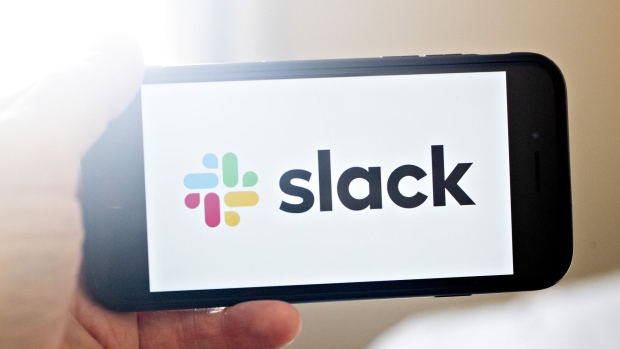Sep 8, 2020
Slack tumbles after quarterly billings miss estimates
, Bloomberg News

Slack Technologies Inc. reported quarterly billings that fell short of analysts’ estimates, signaling the software maker’s dependence on small- and mid-sized businesses that have been hurt by the coronavirus pandemic. Shares declined about 15 per cent in extended trading after the report.
Billings were US$218.2 million in the period ended July 31, the San Francisco-based company said Tuesday in a statement. Analysts, on average, estimated US$232.9 million, according to data compiled by Bloomberg.
“We’re landing with more customers, but the time it takes for that growth to show up in expansion will take some time to play out,” Slack Chief Financial Officer Allen Shim said on a conference call with reporters. “Given this economic backdrop, you are seeing some tighter budgets and a more cautious IT buyer right now.”
Chief Executive Officer Stewart Butterfield has tried to make Slack’s workplace software more appealing to large companies, including by emphasizing technology that allows businesses to communicate with partners, vendors or clients using the app rather than email. The software maker’s service is a combination of an office chat room and a workflow platform to automate tasks. Slack’s customer base of 130,000 organizations features many small- and mid-sized businesses, which generally pay for a subscription on a monthly basis. These clients have been hit hard by the pandemic-fueled recession. Demand from the Americas region, Slack’s largest market, was “softer,” Shim said.
Slack’s shares fell to a low of US$23.77 after closing Tuesday at US$29.32 in New York. The stock has climbed 30 per cent since the start of the year.
In the fiscal second quarter, Slack reported revenue jumped 49 per cent to US$215.9 million, beating analysts’ projections of US$209.2 million. Excluding some items, the company broke even, while analysts, on average, estimated a loss of 3 cents U.S.
Shim said there continues to be a retreat from clients in industries negatively affected by COVID-19, including retailers and hospitality companies.
Slack has also faced intensifying competition from Microsoft Corp.’s product Teams. The smaller company formally filed a complaint against Microsoft to the European Union in July, alleging that the world’s biggest software maker “illegally” bundles Teams with its dominant productivity suite to create an unfair advantage. Microsoft has denied any wrongdoing.
Looking toward the rest of the year, Slack expects some of the macroeconomic challenges of the pandemic will be balanced by growing demand from large organizations that want to communicate with other Slack users on the platform. The software maker raised its annual revenue forecast to as much as $876 million from an earlier projection of as much as $870 million. In the period that ends in October, Slack expects sales of $222 million to $225 million, in line with analysts’ estimates. Still, the company’s estimated year-over-year growth rate of as much as 33% is a decline from Slack’s second fiscal quarter.
(Updates with revenue forecasts in the ninth paragraph.)
©2020 Bloomberg L.P.





